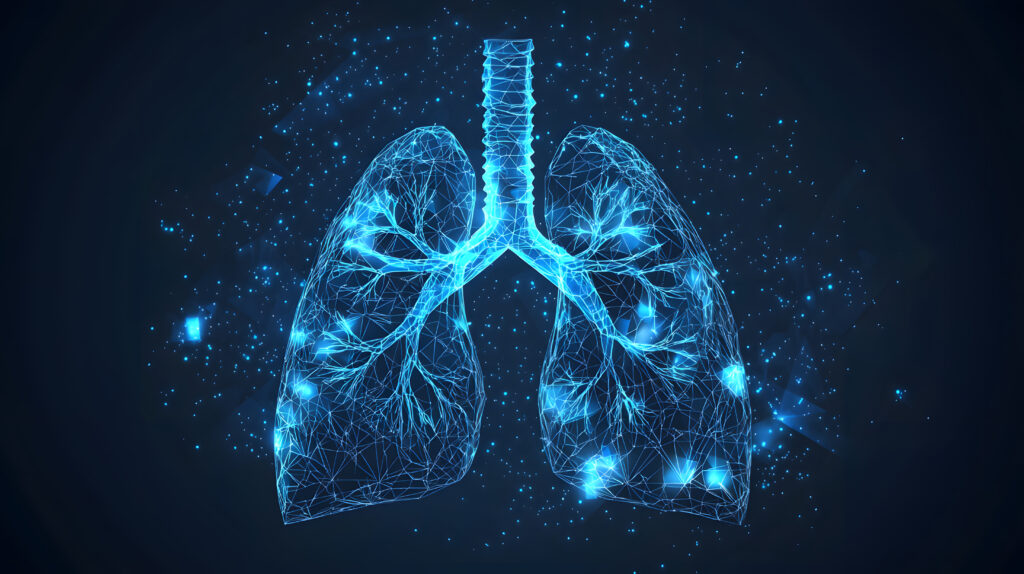Interstitial Lung Disease
An Introduction to Interstitial Lung Disease
Ongoing translational research is unearthing targetable mechanisms of disease
progression shared across the spectrum of interstitial lung diseases (ILDs). Recent approvals of antifibrotic therapies slowing loss of lung function have advanced treatment and care options for patients living with progressive ILD. Immunomodulatory agents inhibiting immune-mediated pathways (including interleukin (IL)-6-driven inflammation and adaptive immune cell responses) are currently undergoing
evaluation for disease modifying properties to preserve lung function in ILD with underlying autoimmune disease.
Expert video highlights and insights from the conference hub and comprehensive peer-reviewed articles from our journal portfolio provide updates on the ever changing landscape. To learn more about how the latest developments impact on patient outcomes view our expert-led learning activities.
Our supporting partners do not constitute an endorsement of the content on this page.

Physician burnout is at a critical point. In this episode, Nicky speaks with Dr Alfred Atanda about why so many physicians are burning out and what can be done to change the trend. From personal experience to system-wide solutions, Dr Atanda shares valuable insights on improving physician well-being and building a more effective healthcare culture.

In this episode, we explore the future of continuing medical education (CME) with the team behind touchIME. Hannah Fisher and Matthew Goodwin share insights into global and US trends, the importance of patient inclusivity and how educational outcomes are evolving to better measure the direct impact of learning on clinical practice and patient care.

Boehringer Ingelheim has announced that its investigational drug, nerandomilast (BI 1015550), has successfully met the primary endpoint in the phase III FIBRONEER™-ILD study. The trial assessed the absolute change from baseline in forced vital capacity (FVC) [mL] at Week 52 compared ...

The unmet need for effective treatments for childhood interstitial lung diseases (ILDs) is significant, with no drugs currently approved for this vulnerable population—unlike in adult patients.

Although there is limited evidence on the link between interstitial lung disease (ILD) and malnutrition, malnourished patients tend to have shorter survival rates, regardless of disease severity. A late-breaking abstract presented at ERS 2024 titled “Dietetic intervention in malnourished patients with interstitial lung disease (ILD): a pilot trial” investigated whether dietitian involvement could provide meaningful benefits to these patients, potentially laying the groundwork for further research and future clinical guidelines.

The BETTER-B study, recently presented at ERS and published in The Lancet Respiratory Medicine, provided new insights into the management of severe breathlessness in patients with chronic respiratory diseases such as COPD and Interstitial Lung Disease (ILD). Severe breathlessness is a debilitating symptom that significantly impacts the quality of life for millions of people worldwide, yet there are currently no licensed medications to effectively address it outside of Australia. Given the clinical challenges and limited treatment options, clinicians often resort to off-label use of medications like mirtazapine, a widely prescribed antidepressant that appeared promising. Despite its initial promise, the study found that doses ranging from 15 to 45 mg of mirtazapine failed to provide significant relief compared to a placebo. Additionally, the findings highlighted potential adverse effects and increased healthcare costs associated with its use.

Interstitial lung diseases (ILDs) are a heterogeneous group of disorders characterized by inflammation and/or fibrosis.1 Pulmonary fibrosis develops due to repeated cycles of injury and impaired repair with fibroblast activation and migration with the resultant deposition of extracellular matrix ...

The TETON program consists of two currently recruiting phase 3 randomized, double-blind, placebo-controlled studies that are investigating the efficacy and safety of inhaled treprostinil in idiopathic pulmonary fibrosis (NCT04708782, NCT05255991). It was a pleasure to talk with Dr. Steven D. Nathan (...

Interstitial lung disease (ILD) frequently complicates rheumatoid arthritis (RA).1 Moreover, it is more common among those who are male, smoke or are seropositive and with increasing age.1 Emergent risk factors include gain-of-function promoter variants in the MUC5B gene and ...

INCREASE OLE was the open-label extension of the INCREASE study (NCT02630316), which investigated the safety and efficacy of inhaled treprostinil in patients with pulmonary hypertension due to interstitial lung disease. We caught up with Prof. Jean Elwing (UC Health, Cincinnati, ...

The InPedILD trial was a phase 3, double-blind placebo-controlled trial investigating nintedanib in children and adolescents with fibrosing interstitial lung diseases (ClinicalTrials.gov: NCT04093024). We were delighted to speak to Dr. Robin Deterding (University of Colorado; Children's Hospital Colorado, Aurora, CO, ...

Nintedanib is an inhibitor of tyrosine kinases involved in the progression of pulmonary fibrosis and blocks the signalling pathways involved in fibrotic processes. We were delighted to speak to Dr. Robin Deterding (University of Colorado; Children's Hospital Colorado, Aurora, CO, ...
Latest articles videos and clinical updates - straight to your inbox
Log into your Touch Account
Earn and track your CME credits on the go, save articles for later, and follow the latest congress coverage.
Register now for FREE Access
Register for free to hear about the latest expert-led education, peer-reviewed articles, conference highlights, and innovative CME activities.
Sign up with an Email
Or use a Social Account.
This Functionality is for
Members Only
Explore the latest in medical education and stay current in your field. Create a free account to track your learning.






